
These early color photographs provide a unique glimpse into the past. With their vivid hues and striking detail, they allow us to experience history in a way that black and white photographs cannot.
The history of color photography dates back to the mid-19th century when photographers first experimented with ways to capture the full spectrum of colors in a single image.
However, it wasn’t until the early 20th century that the first color images were widely available, and they were met with awe and amazement.
One of the earliest color photography processes was the Autochrome Lumière, which was invented in France in 1903 by the Lumière brothers.
The process used a glass plate coated with microscopic grains of potato starch, which were dyed red, green, and blue-violet. When the plate was exposed to light, the starch grains acted as tiny color filters, and the resulting image was a full-color transparency.
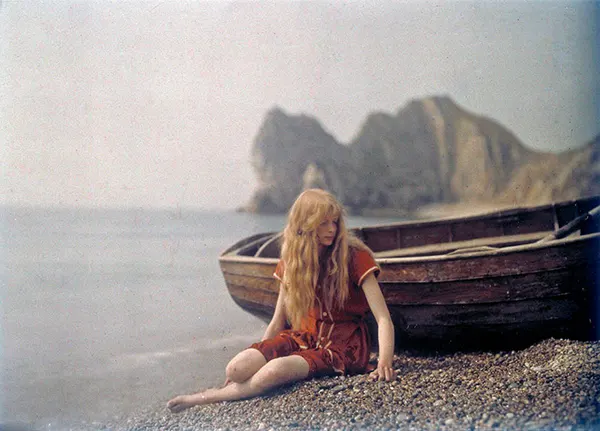
Christina in red, 1913. (Photo by Mervyn O’Gorman).
The Autochrome process was groundbreaking at the time, and it quickly gained popularity among photographers and artists.
The vivid colors and realistic detail of Autochrome images were unlike anything that had been seen before, and they offered a new level of realism to photography.
If an Autochrome was well made and has been well preserved, color values can be very good. The dyed starch grains are somewhat coarse, giving a hazy, pointillist effect, with faint stray colors often visible, especially in open light areas such as skies.
The smaller the image, the more noticeable these effects are. Autochrome has been touted as “the color of dreams.”
The resulting “dream-like” impressionist quality may have been one reason behind the enduring popularity of the medium even after more starkly realistic color processes had become available.

Flower street vendor, Paris, 1914. (Photo by Albert Kahn).
Although difficult to manufacture and fairly expensive, Autochromes were relatively easy to use and were immensely popular among enthusiastic amateur photographers, at least among those who could bear the cost and were willing to sacrifice the convenience of black and white hand-held “snapshotting.”
Autochromes failed to sustain the initial interest of more serious “artistic” practitioners, largely due to their inflexibility.
Not only did the need for diascopes and projectors make them extremely difficult to publicly exhibit, they allowed little in the way of the manipulation much loved by aficionados of the then-popular Pictorialist approach.

Sisters sitting in a garden tying roses together, 1911. (Photo by Etheldreda Janet Laing).
Autochromes continued to be produced as glass plates into the 1930s, when film-based versions were introduced, first Lumière Filmcolor sheet film in 1931, then Lumicolor roll film in 1933.
Although these soon completely replaced glass plate Autochromes, their triumph was short-lived, as Kodak and Agfa soon began to produce multi-layer subtractive color films (Kodachrome and Agfacolor Neu respectively).
Nevertheless, the Lumière products had a devoted following, above all in France, and their use persisted long after modern color films had become available.
The final version, Alticolor, was introduced in 1952 and discontinued in 1955, marking the end of the nearly fifty-year-long public life of the Autochrome.

Daydreams, 1909. (Photo by John Cimon Warburg).
Between 1909 and 1931, a collection of 72,000 autochrome photographs, documenting life at the time in 50 countries around the world, was created by French banker Albert Kahn.
The collection, one of the biggest of its kind in the world, is housed in The Albert Kahn Museum (Musée Albert-Kahn) on the outskirts of Paris.
A new compilation of images from the Albert Kahn collection was published in 2008. The National Geographic Society made extensive use of autochromes and other mosaic color screen plates for over twenty years. 15,000 original Autochrome plates are still preserved in the Society’s archives.
The collection contains unique photographs, including numerous Autochromes from Paris by Auguste Léon from 1925 and by W. Robert Moore from 1936 just before WWII.

Musing: Mrs. A. Van Besten, 1910. (Photo by Alfonse Van Besten).

A girl holds a doll next to soldiers’ equipment in Reims, France, 1917. (Photo by Fernand Cuville).
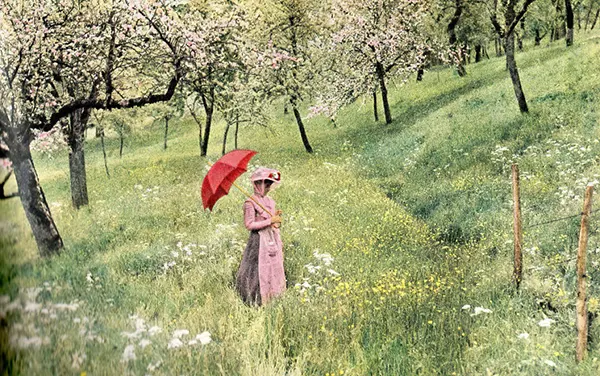
Among the first colored pictures ever taken by Louis Lumière, 1907.

Two girls on a balcony, 1908. (Photo by Etheldreda Laing).

Young girl amidst marguerites, circa 1912. (Photo by Alfonse Van Besten).

Air balloons, Paris, 1914. (Photo by Albert Kahn).

Autochrome of Mark Twain, 1908. (Photo by Alvin Langdon Coburn).

Christina in red, 1913. (Photo by Mervyn O’Gorman).

Outdoor market, Paris, 1914. (Photo by Albert Kahn).

Woman smoking opium, 1915. (Photo by Léon Busy).

Two girls in oriental costume, 1908. (Photo by Etheldreda Janet Laing).

Van Besten painting in his garden, 1912. (Photo by Alfonse Van Besten).

Sweden, near Gagnef (Mother and daughter in traditional clothes), 1910. (Photo by Albert Kahn).

Family portrait at Roannay, Belgium, 1913. (Photo by Georges Gilon).

Young Samurai, Japan, 1912. (Photo by Albert Kahn).

Bosnia-Herzegovina, Sarajevo, 1912. (Photo by Albert Kahn).
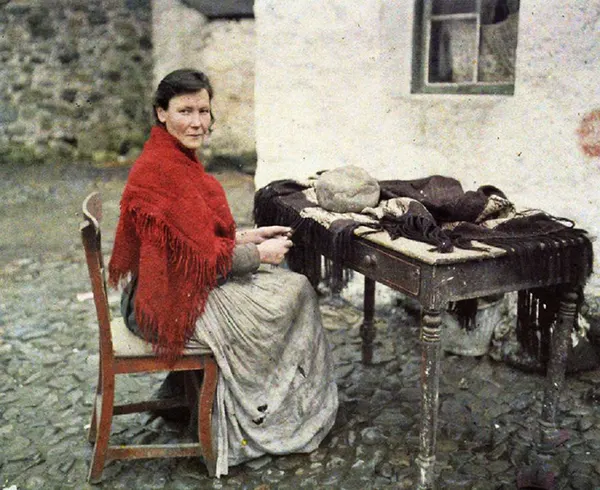
Mother of seven making fringes for knitted shawls, Galway, Ireland, 1913. (Photo by Albert Kahn).

Lanchester 38hp Tourer, 1913.

Porte Saint Denis, Paris, 1914. (Photo by Albert Kahn).

Lunch of a French soldier in front of a damaged bookshop, 1917. (Photo by Paul Castelnau).

Mrs. Warburg, 1915. (Photo by John Cimon Warburg).

Galway, Ireland, 1913. (Photo by Albert Kahn).
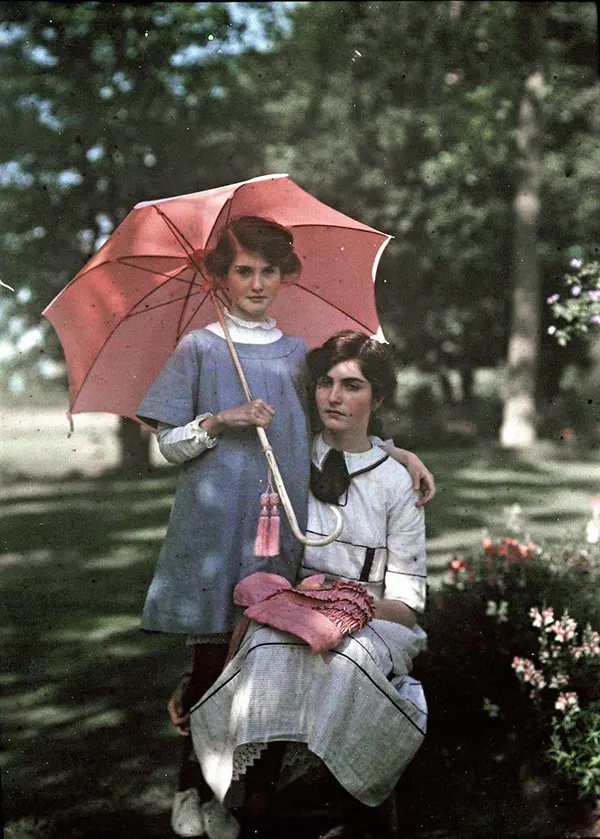
The younger girl stands beside her sister holding a pink parasol. The older girl rests her bonnet on her lap, 1908. (Photo by Etheldreda Laing).

Staithes Harbor, 1915 (Photo by John Cimon Warburg).
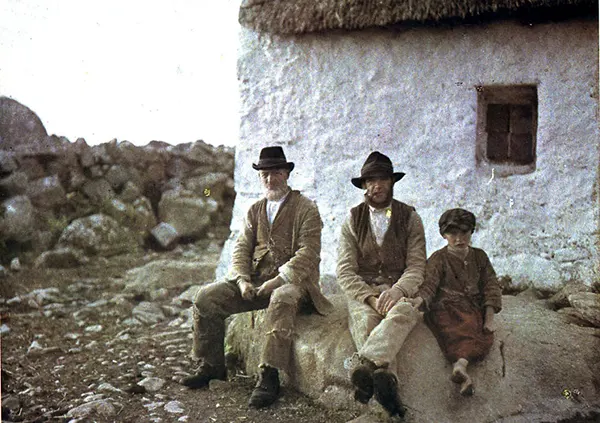
Two fishermen and a boy, An Spidéal, Galway, Ireland, 1913. (Photo by Albert Kahn).

At the entrance to the Pyramid of Menkare, 1913. (Photo by Friedrich Adolf Paneth).

One-legged man, Paris, 1914. (Photo by Albert Kahn).

Eva poses after a successful hunt in Scotland, circa 1920.

Senegalese soldiers serving in the French Army as infantrymen are resting in a room with guns and equipment next to them, 1917. (Photo by Paul Castelnau).

Washing and bleaching, 1912. (Photo by Alfonse Van Besten).

Two French soldiers assigned to a telephone station are washing their laundry in a trough of a fountain, while three others are watching, 1917. (Photo by Paul Castelnau).

Drunk man sleeping on a city street, Paris, 1914. (Photo by Albert Kahn).

Man and woman with suitcases. Date Unknown. (Photo by George Eastman House).

A woman with tattooed arms poses in Bosnia, 1912. (Photo by Albert Kahn).

Distinguished Moorish women in Algeria. Circa 1899.

Two women sit on a bench. Location unspecified. circa 1915. (Photo by George Eastman House).
(Photo credit: Wikimedia Commons / Library of Congress / Flickr).


No comments
Post a Comment